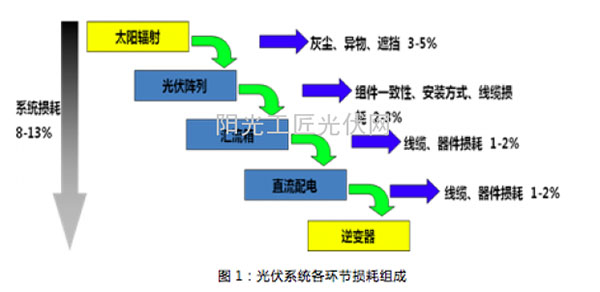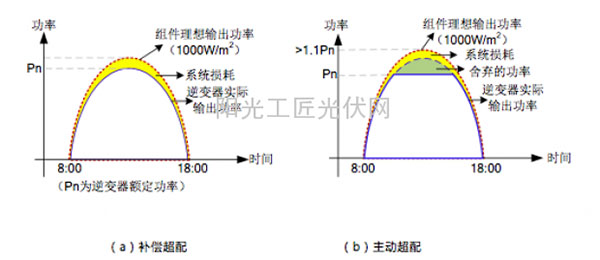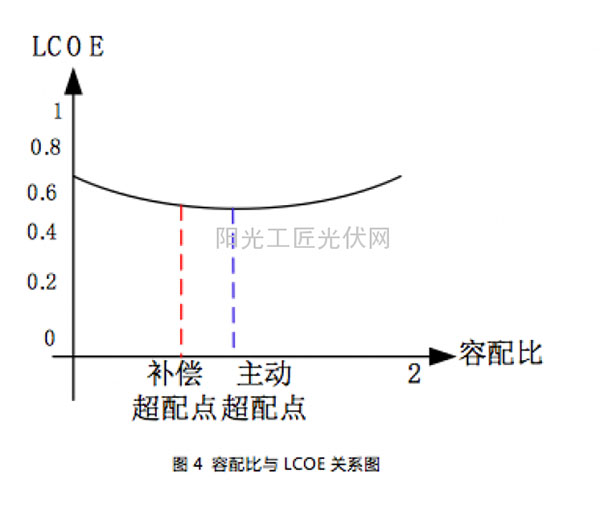How to reduce the cost of system investment and increase investment income is one of the main goals of the design and optimization of photovoltaic power plant systems. European and American countries have studied the design of photovoltaic system refinement earlier. Among them, the matching scheme and application of component capacity and inverter capacity have also attracted the attention of domestic owners, design institutes, and industry experts. “In the past, the capacity of photovoltaic systems was defined in terms of DC power, and now it is based on grid-connected AC power. In the past, the PV-inverter capacity ratio was 1:1, and now it is 1.2:1 or even higher.†This is famous in the domestic photovoltaic industry. The expert Mr. Wang Sicheng gave a presentation to everyone at a seminar in 2014. At the same time, Mr. Wang further analyzed that “by increasing the volume ratio, such as 10MW photovoltaic power station over-provisioned to 12MW, the annual increase in revenue is 2.56 million yuan, and the new investment The IRR (internal rate of return) is greater than 28%. Photovoltaic module capacity and inverter capacity ratio are used as volume ratio. In the early days of photovoltaic applications, the system was generally designed with a 1:1 ratio. In the applied research, it was found that the system is the best by using the lowest levelized cost of electricity (LCOE) as the standard, and the system is optimal under various lighting conditions, component tilt angles, etc. The ratio is greater than 1:1. In other words, a certain degree of improvement in the capacity of PV modules is beneficial to improving the overall economic efficiency of the system. This is what we talk about as component over-provisioning. First, the system main factors affecting ratio Reasonable ratio design needs to be combined with specific project conditions. Comprehensive considerations include major factors such as irradiance, system loss, and component installation angle. The specific analysis is as follows. 1, different areas of different irradiance According to the division criteria of the Wind Energy Solar Energy Assessment Center of the National Meteorological Administration, China's solar energy resources regions are divided into four categories, and the irradiance varies greatly in different regions. Even in the same resource area, there is a large difference in the annual radiation amount in different places. For example, in the same type I resource zone in Tibet's Muer and Qinghai's Golmud, the year-round radiation is 7998 MJ/m2, which is 17% higher than the 6815 MJ/m2 in Golmud. Means the same system configuration, that is, the same volume ratio, the power generation in the Seoul region is 17% higher than Golmud. To achieve the same amount of power generation, you can achieve this by changing the volume ratio. 2, system loss In the photovoltaic system, energy is radiated from the sun to the photovoltaic modules, and the inverters are reached through DC cables, combiner boxes, and DC power distribution, and all the links have losses. As shown in Figure 1, the DC side loss is usually around 7-12%, the inverter loss is about 1-%, and the total loss is about 8-13% (the system loss here does not include the transformer behind the inverter and Line loss section). That is to say, in the case of equal component capacity and inverter capacity, the actual output maximum capacity of the inverter is only about 90% of the rated capacity of the inverter due to various kinds of objectively existing losses, even when the light is best. The inverter is also not fully loaded. Reduces the utilization of inverters and systems. 3, component installation angle The irradiance received by components installed at different angles is different. For example, if the distributed roof is mostly made of tiles, the output of the same capacity component is lower than that of a certain inclination angle. Second, compensation for over-provisioning and active over-provisioning From the above analysis, we can see that choosing a suitable system volume ratio requires many factors to be considered. In order to further illustrate this problem, the over-provisioning is divided into two parts. First, the loss component due to various causes is compensated for by increasing the component capacity. The actual output maximum power of the device reaches the power rating of the inverter and is defined as compensation over-provisioning. At the same time, further increase the capacity of the components and improve the system full load working time, defined as active over-provisioning. In the active over-provisioning, the system has a limited-time operation at a certain period of noon light, but the LCOE of the system reaches the minimum value, ie, the profit is maximized. 1, compensation for overweight Due to the objective existence of system loss in the photovoltaic system, by appropriately increasing the component ratio and compensating the energy loss in the transmission process, the inverter can reach the state of full power work. This is the design idea of ​​the photovoltaic system compensation over-distribution scheme. As shown in the figure, by increasing the mix ratio from 1:1 to 1.1:1, the inverter can reach full load output when the light is best. Increased utilization of the inverter. It also reduces the cost per system of W. 2, active overweight After compensating for over-compensation, the inverter will continue to increase the capacity of the PV modules after part of the time period has reached full capacity. By proactively prolonging the full-load inverter operating time, it will seek a balance between the increased component input costs and the system power generation revenue to realize the LCOE. The minimum, this is the design idea of ​​active over-provisioning of photovoltaic system. As shown in the figure, in the case of active over-provisioning, due to the influence of the rated power of the inverter, the system will work at the rated power of the inverter during the period when the actual power of the component is higher than the rated power of the inverter; During the period when the actual power is less than the rated power of the inverter, the system will work with the actual power of the components. The resulting actual system power generation curve will appear as shown in the "top-down" phenomenon. Active over-provisioning scheme design, the system will be limited to work within a certain period of time, during which time the inverter control components work away from the actual maximum power point. However, the LCOE of the system as a whole is the lowest under the appropriate ratio of the ratio of the mix, that is, the profit is increased. The relationship between compensation over-provisioning, active over-provisioning, and LCOE is shown below. The LCOE keeps declining with the increase of the volume ratio. In the compensation over-provisioning point, the LCOE of the system does not reach the minimum value, further improving the ratio of storage to the active over-provisioning point, the LCOE of the system. Reach the minimum. After continuing to increase the volume ratio, the LCOE will increase. Therefore, the active over-provisioning point is the optimal ratio of the system.
Various products of Kitchen Faucet, providing product images and basic parameters with each Kitchen Faucet and American Standard Kitchen Faucets; We are a professional Chinese manufacturer of Kitchen Faucet, and look forward to your cooperation!
Kitchen Faucet,Basin Faucet,Bathroom Faucet Guangdong Huayou Hardware Products Co.,Ltd , https://www.gudsink.com
Figure 1: Composition of losses in photovoltaic systems 
Figure 2: Comparing the output power of PV inverter before and after compensation 
Figure 3: Comparison of output power of inverter after over-provisioning and active over-compensation 